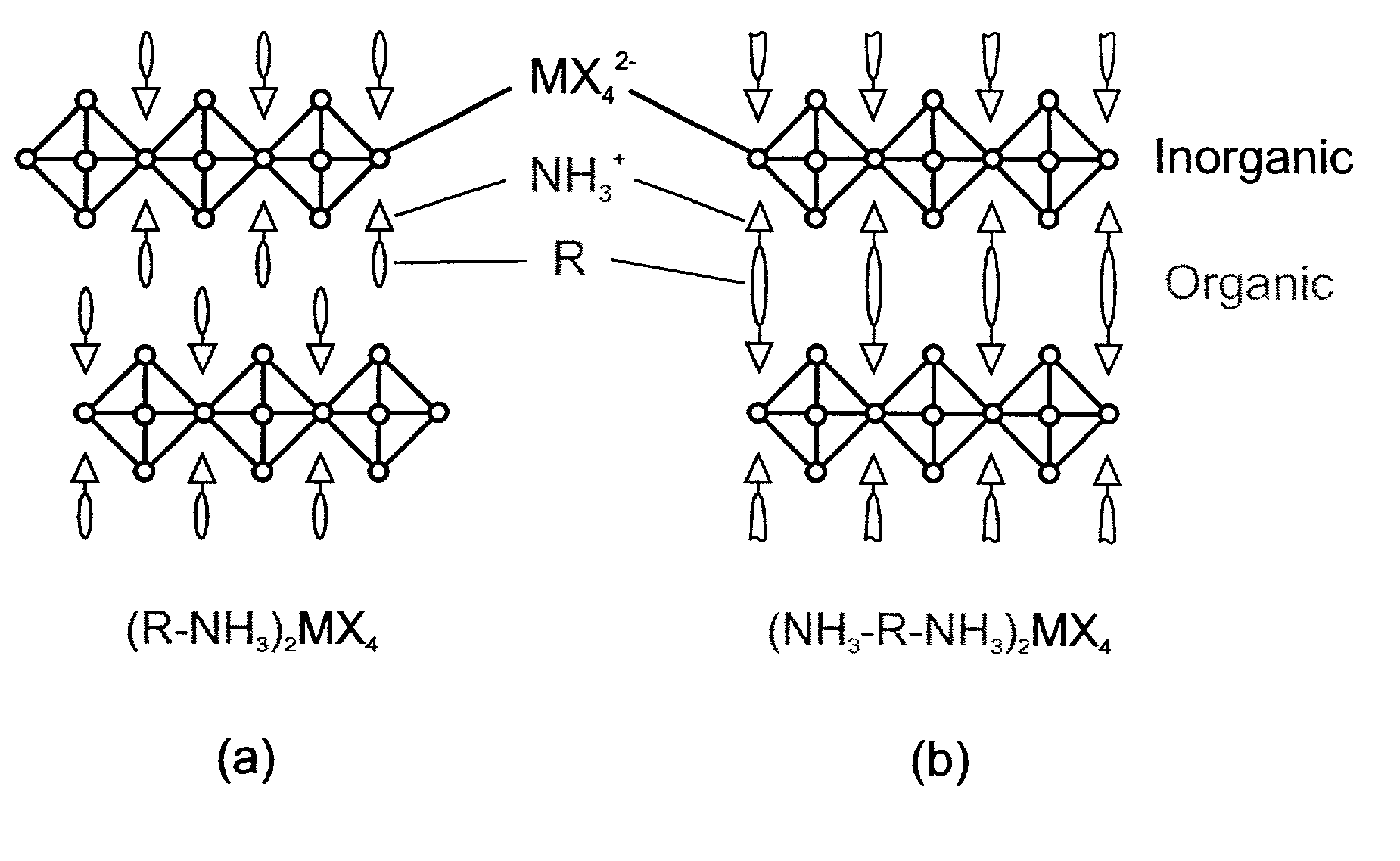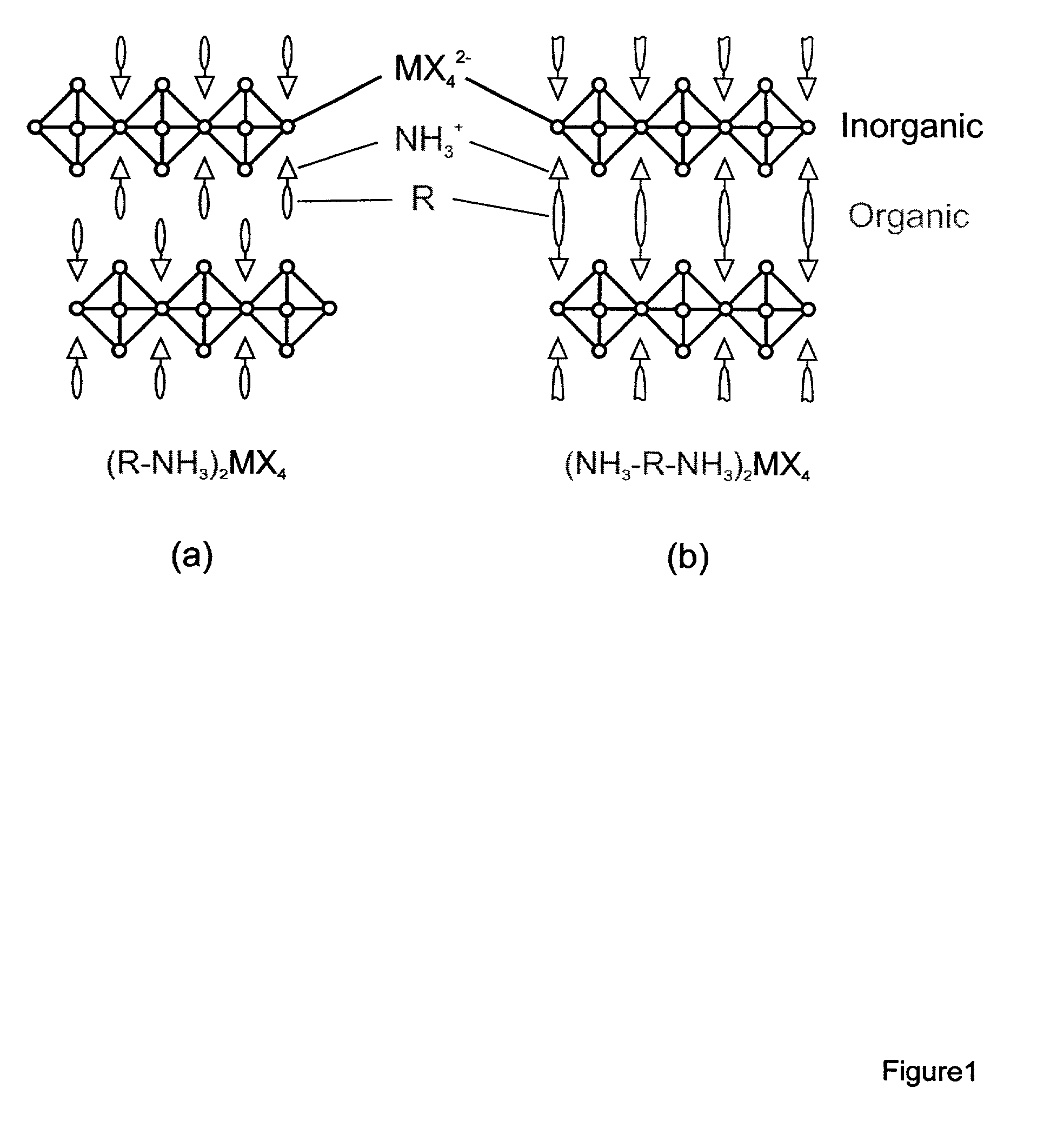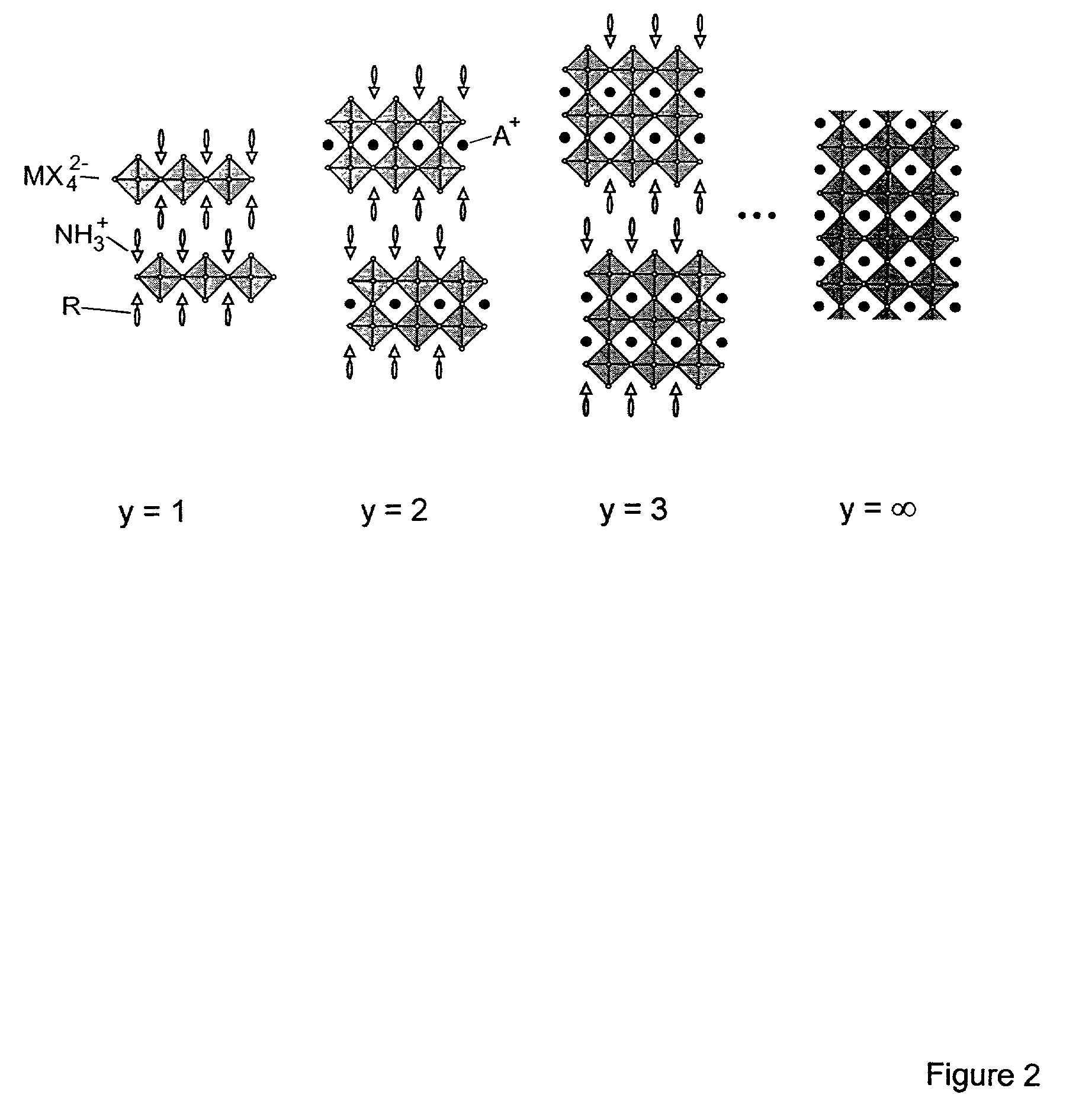Low temperature melt-processing of organic-inorganic hybrid
- Summary
- Abstract
- Description
- Claims
- Application Information
AI Technical Summary
Benefits of technology
Problems solved by technology
Method used
Image
Examples
Embodiment Construction
[0058]Organic-inorganic hybrid materials are a distinct class of materials which enable the combining of the useful characteristics of organic and inorganic components within a single material. Some members of this class of materials exhibit semiconducting characteristics. For the purposes of this description, an organic-inorganic hybrid material is a material composed of organic components and inorganic components which are mixed together on a molecular level, and (i) wherein the material is characterized by a substantially fixed ratio of each organic component to each inorganic component; and (ii) wherein both organic and inorganic components manifest forces that enable a self assembly therebetween into a predictable arrangement.
[0059]One example of an organic-inorganic hybrid material takes the form of an organic-inorganic perovskite structure. Layered perovskites may naturally form a quantum well structure in which a two dimensional semiconductor layer of corner sharing metal ha...
PUM
| Property | Measurement | Unit |
|---|---|---|
| Cooling rate | aaaaa | aaaaa |
| Cooling rate | aaaaa | aaaaa |
| Grain size | aaaaa | aaaaa |
Abstract
Description
Claims
Application Information
 Login to View More
Login to View More - R&D
- Intellectual Property
- Life Sciences
- Materials
- Tech Scout
- Unparalleled Data Quality
- Higher Quality Content
- 60% Fewer Hallucinations
Browse by: Latest US Patents, China's latest patents, Technical Efficacy Thesaurus, Application Domain, Technology Topic, Popular Technical Reports.
© 2025 PatSnap. All rights reserved.Legal|Privacy policy|Modern Slavery Act Transparency Statement|Sitemap|About US| Contact US: help@patsnap.com



